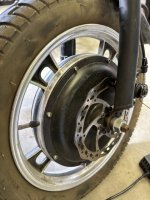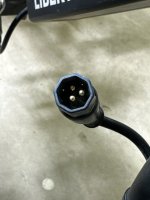icrude
100 mW
Hey everyone, so I have the libertytrike, and we are trying to change the controller to go from 36v to 48v because this thing is limited to 12mph. I’ve attached some photos of the original setup and motor connector. I got a new controller (link attached) and have the three main wires hooked up for the motor (green yellow blue) but the motor doesn’t want to work. We aren’t completely sure how to wire the throttle up. It has red, black, green, blue, and yellow but the new controller only has black white and red for throttle. The original blue and yellow we think is for the reverse which we don’t need those. So we tried red to red, black to black, and green to white. The motor does seem to be getting power because it locks up when we twist the throttle. So I’m not sure if there is something obvious we’re missing. We didn’t wire up the hall wires (does that matter). Any ideas would be appreciated.



